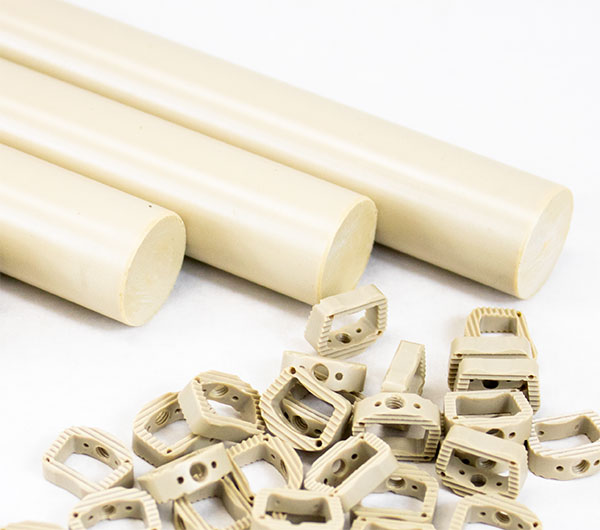Before bringing a medical device to market, it must first pass through several regulatory checks overseen by the U.S. Food and Drug Administration (FDA). The key element that determines its regulatory path toward FDA approval is its classification, and it is essential that medical device manufacturers (MDMs) understand the related implications.
Note: This information applies to medical devices regulated by the FDA for the US. Most major countries or geographic regions have similar regulatory agencies and processes.
Definitions Related to Classifications and Approval Paths
The following definitions are intended to clarify terminology and key steps involved in classifying and approving medical devices:
- A PMA or Premarket Application is the FDA’s most stringent review process, required to demonstrate the safety and effectiveness of Class III medical devices before they can be marketed in the U.S.
- An FDA 510(k) is a premarket submission showing that a medical device is substantially equivalent in safety and effectiveness to a legally marketed predicate device.
- The De Novo Classification is an FDA pathway that allows new, low- to moderate-risk medical devices with no suitable predicate to be classified and marketed after showing they are safe and effective.
- A Quality Management System “QMS” is a structured framework of policies, processes, and procedures that ensures a company consistently meets regulatory requirements and delivers safe, effective, and high-quality products.
How Are Medical Devices Classified?
Medical devices are placed in one of three classifications: Class I, Class II or Class III. Nearly all regulatory hurdles descend from this categorization:
- Class I medical devices –Class I medical devices constitute the lowest risk to patients and are therefore subject to less strict regulations than Class II and III devices. Examples include bandages, stethoscopes, and hospital beds. All medical devices are subject to the FDA’s General Controls, but Class I devices are generally exempt from the 510(k) submission process and do not require a Premarket Application (PMA).
- Class II medical devices –Class II medical devices typically remain in extended external contact with the patient or come in brief or very limited contact with a patient’s internal bodily fluids and tissue. They pose additional risk and are regulated with greater oversight. According to the FDA, Class II devices require more than general controls for safety. Examples include infusion pumps, syringes, catheters and pregnancy test kits, as well as contact lenses and electric wheelchairs. There are exceptions, but most Class II medical devices must be approved through a 510(k) submission before they can be marketed.
- Class III medical devices –Class III medical devices represent the greatest safety risk to patients and include devices like pacemakers, heart valves and implantable prosthetics. Often, they support or sustain life, and failure could cause severe injury or death. To ensure these devices are safe and efficacious, the FDA requires most Class III medical devices to pass through the Premarket Approval (PMA) process. PMAs include a deep safety and performance study. Further, MDMs must submit extensive safety and performance documentation, including clinical studies. In their product planning, MDMs should expect a lengthy process for these steps.

Class I and Class II Regulatory Paths
While not as strictly regulated as Class III devices, Class I and Class II devices must pass through several specific regulatory gates as follows:
- Class I – MDMs must adhere to the FDA’s General Controls for any Class I medical devices. That includes registering the device and manufacturer, and proper labeling. Medical device manufacturers that produce Class I devices must implement and adhere to a QMS as well. In some instances, Class I devices must be approved via a 510(k) submission.
- Class II – Class II devices are generally approved through a 510(k) submission, which poses an additional safety and performance hurdle for medical devices. Specifically, MDMs use a 510(k) submission to demonstrate “substantial equivalence” to another approved Class II medical device. This means the medical device is used the same way and has the same technological characteristics as the predicate (existing) device. If an MDM cannot demonstrate substantial equivalence to a predicate medical device, there are alternative approval options, like a De Novo Classification or filing a PMA.
Premarket Applications - How Class III Medical Devices are Regulated
PMAs are reserved for Class III medical devices and Class II medical devices whose safety and efficacy cannot be demonstrated through a 510(k). PMAs are the most stringent regulatory path for medical devices and include an administrative and completeness review, an in-depth scientific and QMS review, a panel review and an extended deliberation between FDA panel members.
PMAs typically take several months to complete and require ongoing communication with the FDA to manage. To facilitate the process, MDMs often work with an experienced medical device manufacturing partner who can assist with establishing a QMS and acquiring the necessary technical documentation.
The FDA’s General and Special Controls for Medical Devices
The FDA requires all medical devices to adhere to all of its general controls. General controls include regulations on the following:
- adulteration
- misbranding
- mislabeling
- registration
- device listings
It should be noted that MDMs are required to remedy the public should their medical device be deemed faulty or fraudulent. This fact makes adherence to the general controls and comprehensive approval protocol for all classes of devices a prudent and essential practice.
Special Controls apply to Class II medical devices predominantly, and place additional safety and performance controls on the device. These Special Controls include:
- additional labeling requirements
- performance standards and documentation
- post market surveillance
The FDA provides guidance documentation to MDMs for Class II devices, and it is recommended that MDMs follow this documentation to ensure they pass through their 510(k) submission smoothly.
Understanding the Medical Device’s Classification Can Facilitate Planning and Expedite Approval
The medical device’s classification determines major elements of a product development and commercialization plan, including the time required. It defines how a medical device will be regulated, how long it will take to bring it to market, what post-launch controls are needed in manufacturing and the QMS necessary.
Given the stakes, it is essential that MDMs understand the implications of a medical device’s classification. This includes assessing potential predicate devices, understanding how the FDA assesses performance and biocompatibility, and working with a manufacturing partner that also understands the implications behind medical device classification.
FAQs for Medical Device Classifications and FDA Approval Steps
How can an MDM determine the right device classification early in the planning process?
Are There Common Reasons why the FDA Would Delay or Reject Submittals?
Delays or rejections usually occur because technical documentation is not complete or is not well organized. Specific red flags or barriers arise because of incomplete data on performance and/or biocompatibility, sub-par QMS implementation, or device labeling that is unclear or could be mis-interpreted. To avoid pitfalls, it is a good practice to engage with the FDA early in the development stages for guidance and pre-submittal meetings.
How long does it take for a device to go through the FDA approval process?
Typical timelines vary widely depending on the device’s classification:
- Class I devices typically do not require pre-market submissions, and the approval process often can be completed within weeks.
- Class II devices require 510(k) reviews. They typically require 90 days, but it may take longer in cases where the FDA requires additional data.
- Class III devices involve PMA reviews that can take 6–12 months, or much longer if the FDA requires clinical trials.
Do regulatory requirements end once a device is approved?
The MDM’s responsibilities do not end there. Post-market duties include:
- complaint handling
- safeguarding continued QMS compliance
- ongoing surveillance, and
- reporting of any adverse events
Also, manufacturers must address any new FDA requirements or field safety concerns that arise after commercialization.
